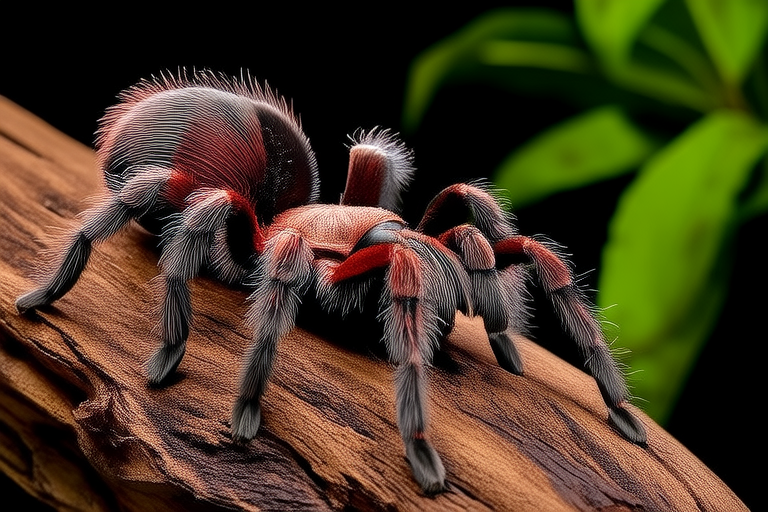Life With a Tarantula: Is It As Scary As You Think?
Welcome to the world of tarantulas! These eight-legged creatures have long been shrouded in mystery and fear, often depicted as aggressive and dangerous in movies and popular culture. However, the reality is far from what most people imagine. In this article, we will dispel some common myths about tarantulas, share personal experiences, and provide you with all the information you need to consider keeping one as a pet.
Dispelling Common Myths About Tarantulas
Let’s start by addressing some of the most common misconceptions about tarantulas:
- Myth 1: Tarantulas are highly aggressive. In truth, tarantulas are generally shy and non-aggressive. They prefer to avoid confrontation and will only bite if they feel threatened or cornered. Their bites are usually no worse than a bee sting, and their venom is not deadly to humans.
- Myth 2: All tarantulas are alike. There are over 900 species of tarantulas, each with its own unique characteristics. Some are ground-dwelling, while others are arboreal. Their size, color, and temperament can vary significantly depending on the species.
- Myth 3: Tarantulas are dirty and smelly. Properly cared for, tarantulas do not produce any noticeable odor. Their enclosures should be cleaned regularly, but the maintenance is minimal compared to other pets.
Personal Experiences: Living with a Tarantula
Many people who have owned tarantulas describe them as fascinating and rewarding pets. For instance, Sarah, a tarantula owner for five years, shares her experience:
“I was initially very nervous about having a tarantula as a pet. I had always imagined them as scary and aggressive creatures. But after adopting my first tarantula, I quickly realized how gentle and docile they can be. She rarely moves around her enclosure unless she’s hunting for food, and she has never shown any aggression towards me. Watching her hunt and interact with her environment has been incredibly interesting.”
Care Requirements for Tarantulas
Proper care is essential to ensure your tarantula thrives. Here are some key aspects to consider:
Housing Needs
Tarantulas require a well-maintained enclosure that mimics their natural habitat. A typical setup includes:
- A spacious terrarium with adequate ventilation.
- A substrate layer of coconut fiber, peat moss, or soil.
- Hiding spots such as cork bark or artificial plants.
- Temperature control between 75°F and 85°F (24°C to 29°C).
- Humidity levels between 60% and 80%, depending on the species.
Diet
Feeding a tarantula is straightforward. They are carnivorous and thrive on a diet of live insects. Suitable prey items include crickets, mealworms, and dubia roaches. The size of the prey should be appropriate for the tarantula’s age and size, ensuring it can be consumed within a reasonable time frame.
Handling Tips
While tarantulas can be handled, it is crucial to approach them with care and respect. Always wash your hands before and after handling to prevent the transfer of oils or residues. Use a soft, wide-handled tool like a paintbrush to gently coax the tarantula onto your hand. Never grab or squeeze the tarantula; instead, allow it to walk onto your hand at its own pace.
Fears Associated with Tarantulas
The fear of tarantulas is often rooted in misunderstanding and misinformation. Let’s address some common fears:
- Fear of Bites: As mentioned earlier, tarantulas are not aggressive and will only bite as a last resort. Their fangs are relatively small, and the venom is harmless to humans.
- Fear of Size: While some tarantulas can grow quite large, their size does not equate to danger. Many species remain relatively small and manageable as pets.
- Fear of Appearance: The appearance of tarantulas can be intimidating, especially for those unfamiliar with them. However, once you understand their behavior and see them up close, many find their appearance less frightening.
Scientific Facts to Ease Concerns
Understanding the biology and behavior of tarantulas can help alleviate fears:
- Defense Mechanisms: When threatened, tarantulas may use their urticating hairs as a defense mechanism. These tiny barbed hairs can cause irritation to the eyes and skin of predators. This is a passive defense and poses no threat to humans when handled properly.
- Lifespan: Tarantulas can live for many years, with some species reaching ages of 20 to 30 years. This longevity makes them excellent companions for those willing to commit to long-term care.
- Sense of Smell: Tarantulas have a keen sense of smell, which helps them locate prey and navigate their environment. This sense is so acute that they can detect the presence of food or threats from a distance.
Advice for Those Considering a Tarantula as a Pet
If you’re considering a tarantula as a pet, here are some final tips:
- Research: Before purchasing a tarantula, research the specific species to understand its care requirements. Not all tarantulas are suitable for beginners.
- Patience: Tarantulas are solitary animals and do not enjoy being handled frequently. Be patient and give them time to adjust to their new environment.
- Commitment: Owning a tarantula is a long-term commitment. Ensure you are prepared to care for your pet for many years.
- Enjoyment: Watching your tarantula interact with its environment and observing its unique behaviors can be incredibly rewarding. Each species has its own personality, making them fascinating to observe.
In conclusion, owning a tarantula can be a rewarding and enjoyable experience. By understanding their needs and dispelling common myths, you can appreciate these amazing creatures for the gentle and fascinating pets they truly are. If you’re open-minded and willing to learn, a tarantula can make a wonderful addition to your household.
